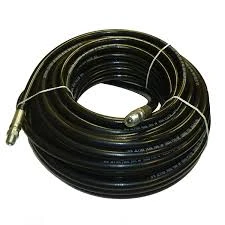Steps to Replace Power Steering Hose in Your Vehicle Easily
Changing Power Steering Hose A Comprehensive Guide
Power steering is a crucial component of modern vehicles, providing drivers with the ease of maneuverability necessary for smooth driving. Over time, however, certain parts of the power steering system may wear out or become damaged, and one of the most common issues arises with the power steering hose. Changing a power steering hose is a task that can be tackled by individuals with basic mechanical skills, and this article will guide you through the process.
Understanding the Power Steering Hose
The power steering hose is a vital link between the power steering pump and the steering gear or rack. Its role is to transport hydraulic fluid under high pressure, allowing the steering mechanism to function effectively. Over time, hoses can become brittle, crack, or develop leaks, leading to a loss of hydraulic pressure and diminished steering response. Recognizing the signs of a failing power steering hose—such as fluid leaks, whining noises when turning the wheel, or stiff steering—is essential to prevent further damage to the power steering system.
Tools and Materials Needed
Before diving into the replacement process, it’s important to gather the necessary tools and materials. You will need
- A new power steering hose compatible with your vehicle model - A socket set and wrenches - Screwdrivers (both flathead and Phillips) - Fluid catch pan - Power steering fluid - Pliers - Rags or towels for cleanup
Step-by-Step Process
1. Safety First Before starting any repair work, ensure that the vehicle is parked on a level surface. Turn off the engine and allow it to cool down. For added safety, disconnect the negative battery terminal to prevent any electrical issues.
changing power steering hose

2. Locate the Power Steering Hose Open the hood of your vehicle and locate the power steering pump. The hose typically connects the pump to the steering gear. Refer to your vehicle's manual if you are unsure.
3. Drain the Power Steering Fluid Place a fluid catch pan under the power steering pump. With the appropriate tools, carefully loosen the hose clamps and remove the hose from the pump, allowing any remaining fluid to drain into the pan. Make sure to work in a well-ventilated area, as power steering fluid can be hazardous.
4. Remove the Old Hose Once the fluid is drained, take note of how the old hose is connected and remove it from the steering gear. You may need to use a screwdriver or pliers to loosen and remove any additional clamps or fittings.
5. Install the New Hose Take the new power steering hose and position it in place. Start by connecting it to the steering gear, ensuring a snug fit. Follow this with a connection to the power steering pump, making sure to secure all clamps and fittings.
6. Refill the Power Steering Fluid With the new hose installed, it’s time to refill the power steering fluid. Check your vehicle's manual for the appropriate type of fluid and fill the reservoir to the recommended level.
7. Check for Leaks Before starting the engine, double-check all connections for tightness. Once satisfied, reconnect the negative battery terminal and start the engine. Turn the steering wheel from lock to lock several times to help bleed any air from the system. While doing this, keep an eye out for any leaks.
8. Final Check and Clean-Up After confirming that there are no leaks and the steering system feels responsive, turn off the engine. Dispose of the old power steering fluid and any other waste materials properly.
Conclusion
Changing a power steering hose can be done with patience and the right tools. While the task may seem daunting initially, understanding the process makes it manageable. By taking the time to learn how to perform this maintenance task, you can save money and ensure your vehicle's steering system remains in top condition, ultimately ensuring a safer and more enjoyable driving experience. Remember, regular inspections of your power steering system can help you catch potential issues early, keeping your vehicle running smoothly.
-
Understanding Power Steering Tube ReplacementNewsApr.16,2025
-
SAE J1401 Brake Hoses: A Critical Component for Vehicle SafetyNewsApr.16,2025
-
Pipe Couplings: Essential Components for Effective Plumbing and Fluid SystemsNewsApr.16,2025
-
Hose Guard Solutions for Every NeedNewsApr.16,2025
-
Effective Spiral Protection SolutionsNewsApr.16,2025
-
Effective Sewer Cleaning SolutionsNewsApr.16,2025

